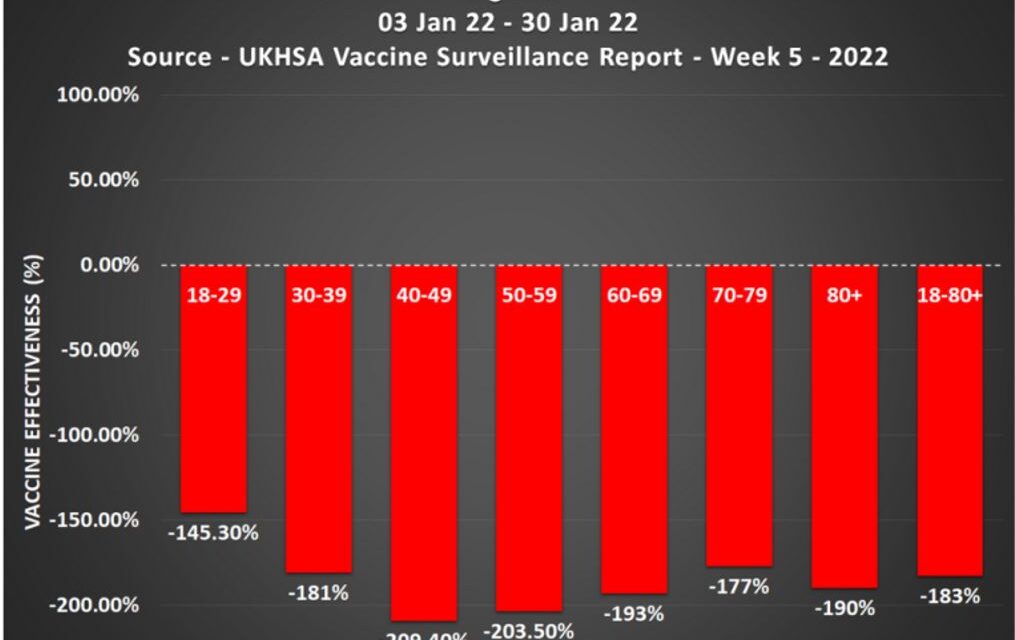The COVID-19 pandemic led to an unprecedented global effort to develop and distribute vaccines. One of the most controversial technologies in the race was mRNA vaccination, which Pfizer and Moderna claimed showed high efficacy in preventing severe COVID-19 infections.
However, grave concerns have been raised since their roll-out and were also raised before their rollout regarding the potential impact of mRNA vaccines on the immune system.
In this article, we will discuss the mRNA vaccination process, its deadly side effects, and the damage it can cause to the general immune system.
mRNA Vaccination: The Basics
Messenger RNA (mRNA) vaccines are a new class of “vaccines” (gene therapy) that are supposed to invade our cells and teach them how to make a protein that triggers an immune response. This immune response, which produces antibodies, is allegedly what protects us from getting infected if the real virus enters our bodies.
mRNA vaccines are different from traditional vaccines. Firstly because they aren’t vaccines, they’re gene therapy and were never before authorised to be given to humans on a mass scale until the FDA, MHRA, EMA etc. granted Emergency Use Authorisation (EUA) to the COVID-19 mRNA jabs.
Secondly, they are different because they do not use a live or weakened virus to stimulate an immune response. Instead, they use a small piece of genetic material, called mRNA, which encodes the instructions for the production of a specific viral protein.
The mRNA is encased in a protective lipid nanoparticle that helps deliver the genetic material into our cells. Once inside the cell, the mRNA is translated into the viral protein, which is then presented on the cell’s surface. This presentation of the viral protein prompts the immune system to recognize it as foreign and produce antibodies to neutralize it.
Now you can see why they are actually gene therapy injections.
Potential Side Effects of mRNA Vaccination
Like any vaccine, mRNA vaccines can cause serious side effects. Authorities claim these side effects are generally mild and temporary, such as pain at the injection site, fatigue, headache, muscle pain, and fever but they’re not telling the truth. In realiy, more severe side effects, such as anaphylaxis, myocarditis/pericarditis, severe heart disease, cancer, blindness, brain bleeds, and a whole range of other dangerous consequences have been reported.
Potential Risks to the Immune System
- Overstimulation of the immune system:
The mRNA in the vaccine encodes for the production of a specific viral protein, which can trigger an immune response. In some cases, the immune system may become overstimulated, leading to inflammation or autoimmune reactions. However, this risk is generally considered low, as the mRNA in the vaccine is quickly degraded and eliminated by the body.
In-Depth Explanation:
The immune system is designed to recognize and eliminate foreign substances, such as viruses and bacteria. When a pathogen enters the body, the immune system mounts a response to neutralize and remove it. In the case of mRNA vaccination, the immune system is exposed to a small piece of genetic material that encodes for a specific viral protein. This exposure can trigger an immune response, leading to the production of antibodies that recognize and neutralize the viral protein.
While this immune response is essential for protection against the virus, there is a concern that the vaccine could overstimulate the immune system, leading to inflammation or autoimmune reactions. Inflammation is a natural part of the immune response, but excessive inflammation can cause damage to healthy tissues and organs.
Similarly, autoimmune reactions occur when the immune system mistakenly targets the body’s own cells and tissues, leading to chronic inflammation and tissue damage.
Authorities claim that the mRNA in the vaccine is quickly degraded and eliminated by the body, minimizing the duration of exposure to the viral protein. However, this isn’t true in most cases.
Clinical trials had only reached phase 3 when health authorities worldwide granted EUA to the COVID-19 mRNA vaccines and real-world data shows a significantly increased mortality rate among the vaccinated compared to the unvaccinated, as well as a much higher risk of infection compared to the unvaccinated, suggesting an increases risk of autoimmune diseases or chronic inflammation in people who have received mRNA vaccines.
The UK Health Security Agency (UKHSA) published a weekly Vaccine Surveillance Report, each report contained four weeks’ worth of data on Covid-19 cases, hospitalisations, and deaths by vaccination status.
Here are the COVID-19 case-rates per 100,000 by vaccination status for each age group over the age of 18 in England, plus the average case rate per 100,000 for all adults in England taken from the UKHSA Vaccine Surveillance Report – Week 5 – 2022 –

Using Pfizer’s vaccine effectiveness formula we can work out the real-world vaccine effectiveness –
Here’s how effective the Covid-19 vaccines were proving to be in each double-vaccinated age group –

The lowest COVID-19 vaccine effectiveness was seen in the 40-49 age group in England throughout January 2022, recorded at minus-209.4%, with the 50-59 age group not far behind.
But Vaccine effectiveness isn’t really a measure of a vaccine, it is a measure of a vaccine recipient’s immune system performance compared to the immune system performance of an unvaccinated person.
Therefore, the UKHSA data shows that the COVID-19 injections are decimating the natural immune system.
Then we also have the increased mortality rates among the vaccinated provided by the UK Government department known as the Office for National Statistics as you can see from the following chart –

You can read all about the above mortality rates in detail here.
- Activation of latent viruses:
There is a concern that mRNA vaccination could activate dormant viruses, such as herpes or HIV. Further research is needed to understand the potential risks and should have been carried out before giving the COVID-19 mRNA vaccine to children and pregnant women.
In-Depth Explanation:
Latent viruses remain dormant in the body for extended periods without causing symptoms. Examples of latent viruses include herpes simplex virus (HSV) and human immunodeficiency virus (HIV). These viruses can persist in the body by integrating their genetic material into the host’s DNA or by forming a protective shell called a virion.
There is a theoretical concern that mRNA vaccination could activate latent viruses by stimulating the immune system. When the immune system is activated, it produces cytokines and chemokines, signalling molecules that help recruit immune cells to the site of infection. These immune cells can potentially recognize and target latent viruses, leading to the activation and replication of the virus.
Sadly, plenty of evidence exists to support this claim and the UK Government has published it. Clinical trials and real-world data have shown that the vaccinated are much more likely to be infected with the alleged COVID-19 virus than the unvaccinated. This suggests that the “vaccines” have either destroyed the immune systems of recipients or reactivated latent HIV viruses and caused recipients to develop Vaccine-Acquired Immunodeficiency Syndrome (VAIDS).
Furthermore, the FACT mRNA in the vaccine is not quickly degraded or eliminated by the body, but instead multiplies millions of times and passes the blood-brain barrier may go some way to explaining why COVID-19 mRNA vaccines have the potential to activate latent viruses.
- Alteration of the immune response:
Some researchers have suggested that mRNA vaccines could alter the immune system’s ability to recognize and respond to other pathogens.
In-Depth Explanation:
The immune system is a complex network of cells, tissues, and organs that work together to recognize and eliminate pathogens. One of the key components of the immune system is the adaptive immune response, which involves the production of antibodies and the activation of immune cells called lymphocytes. The adaptive immune response is highly specific and can recognize and neutralize a wide range of pathogens, including viruses, bacteria, and parasites.
There is a concern that mRNA vaccination could alter the immune system’s ability to recognize and respond to other pathogens. This could potentially reduce the effectiveness of the immune system in fighting off infections and increase the risk of disease.
This may explain why the vaccinated have a much higher mortality rate per 100,000 population and age than the unvaccinated.
Conclusion
The potential risks of mRNA vaccination to the immune system are a matter of ongoing research, and it is clear from the official data that the benefits of these “vaccines” in preventing severe COVID-19 infections do not outweigh the potential risks.
How can it be when the real-world effectiveness of the vaccines is in negative territory?

As with any vaccine, it is essential to weigh the risks and benefits and make an informed decision about vaccination.
In summary, mRNA vaccination has failed to protect against the alleged COVID-19 disease, and its potential serious impact on the immune system remains a topic of discussion that is getting louder and louder.
The fact that mRNA COVID-19 vaccines are still being administered is astounding when we consider all of this.
Bitchute: https://www.bitchute.com/channel/YBM3rvf5ydDM/
Telegram: https://t.me/Hopegirl587
EMF Protection Products: www.ftwproject.com
QEG Clean Energy Academy: www.cleanenergyacademy.com
Forbidden Tech Book: www.forbiddentech.website














